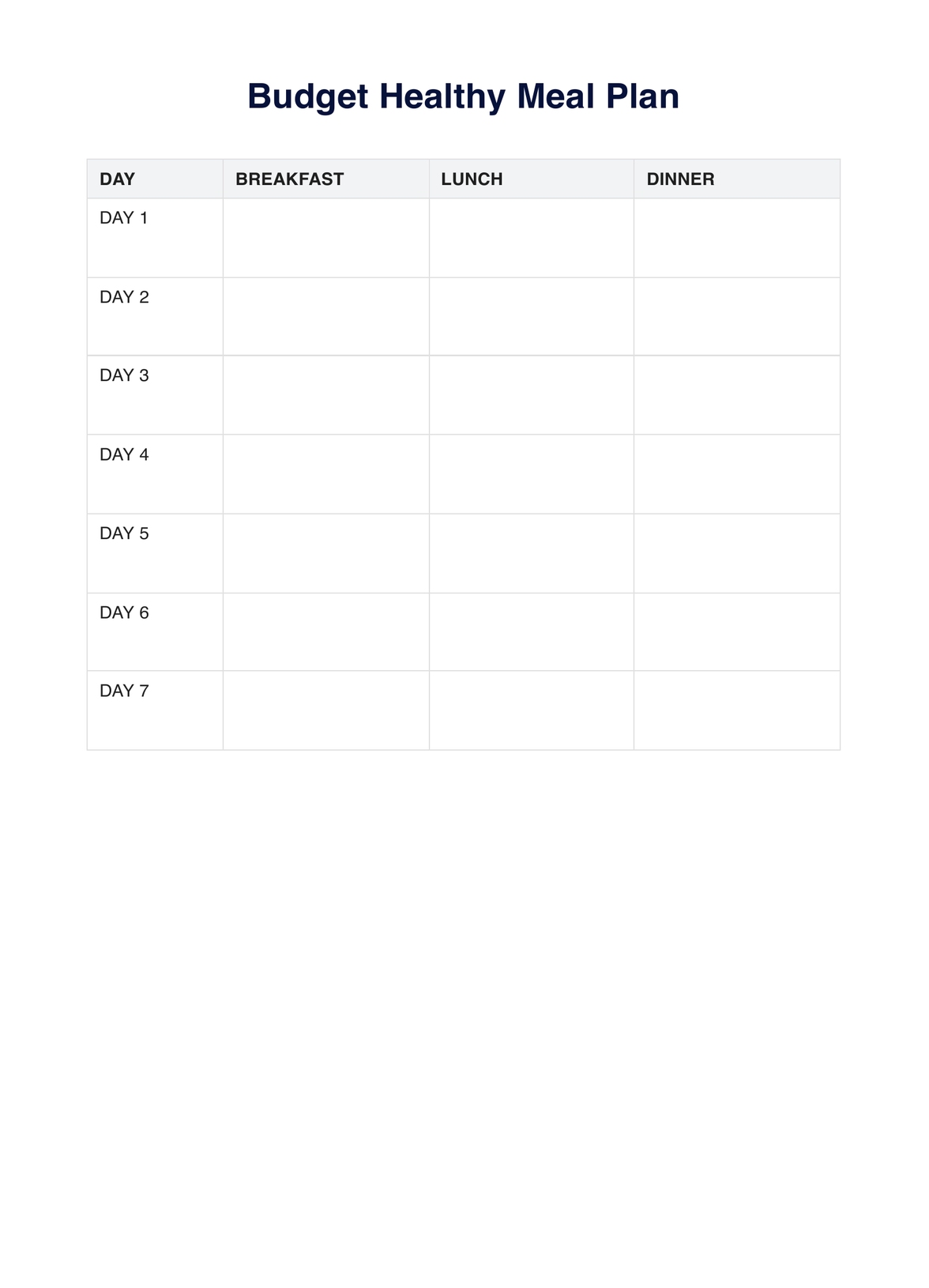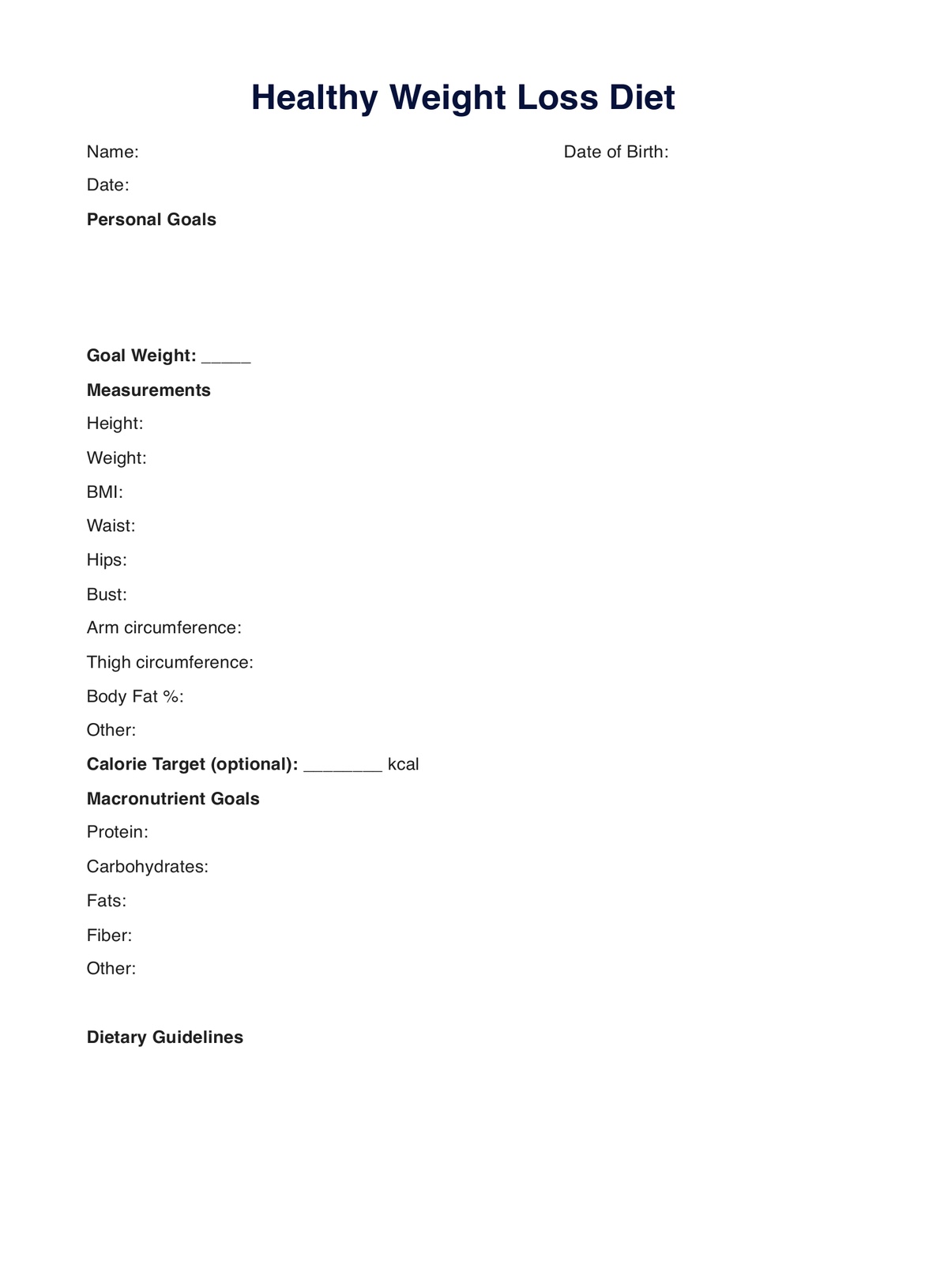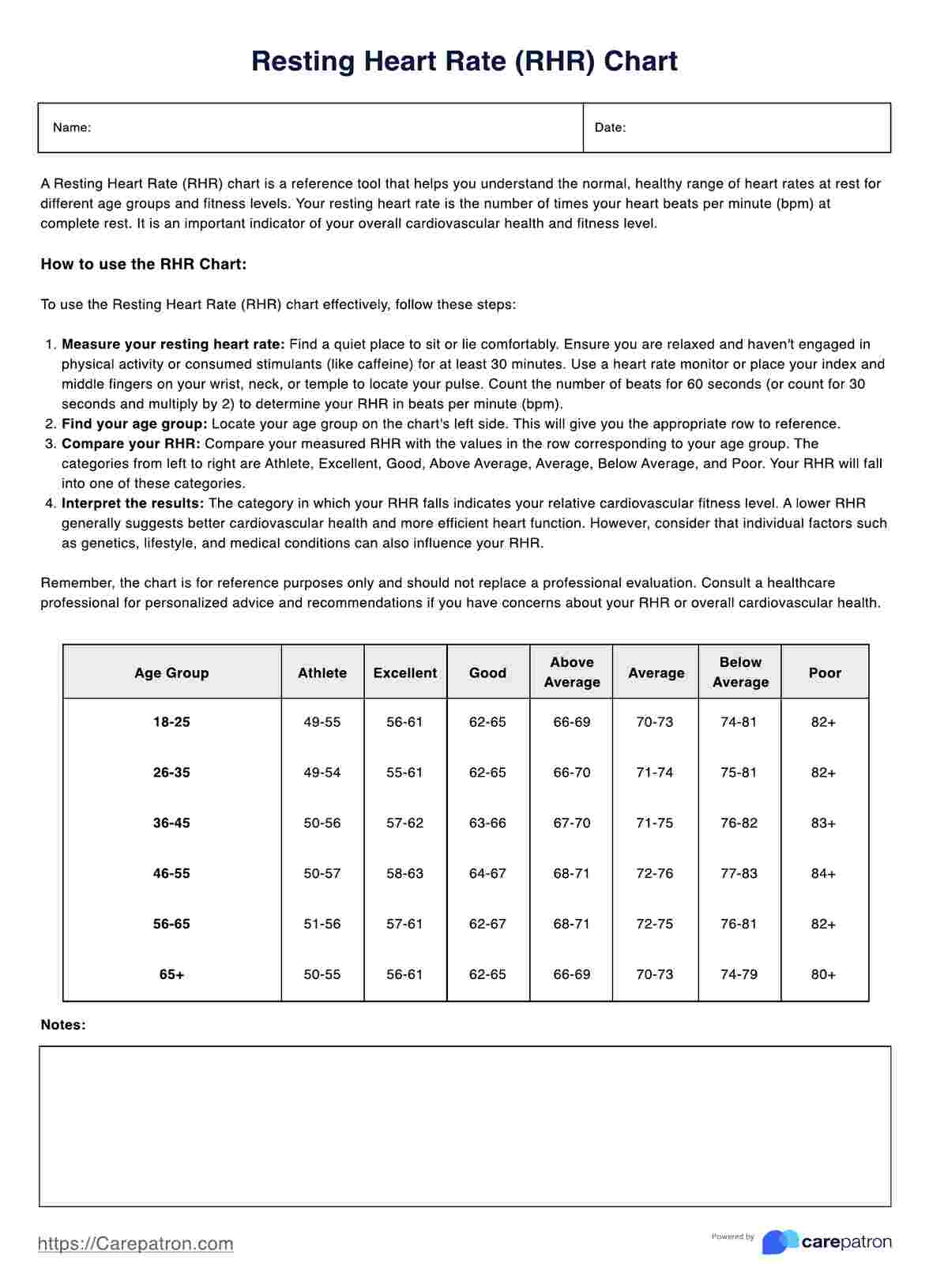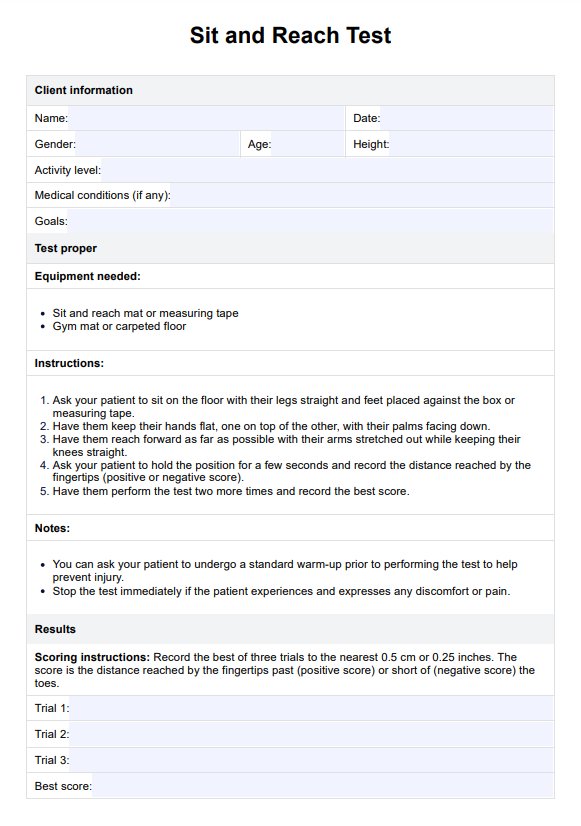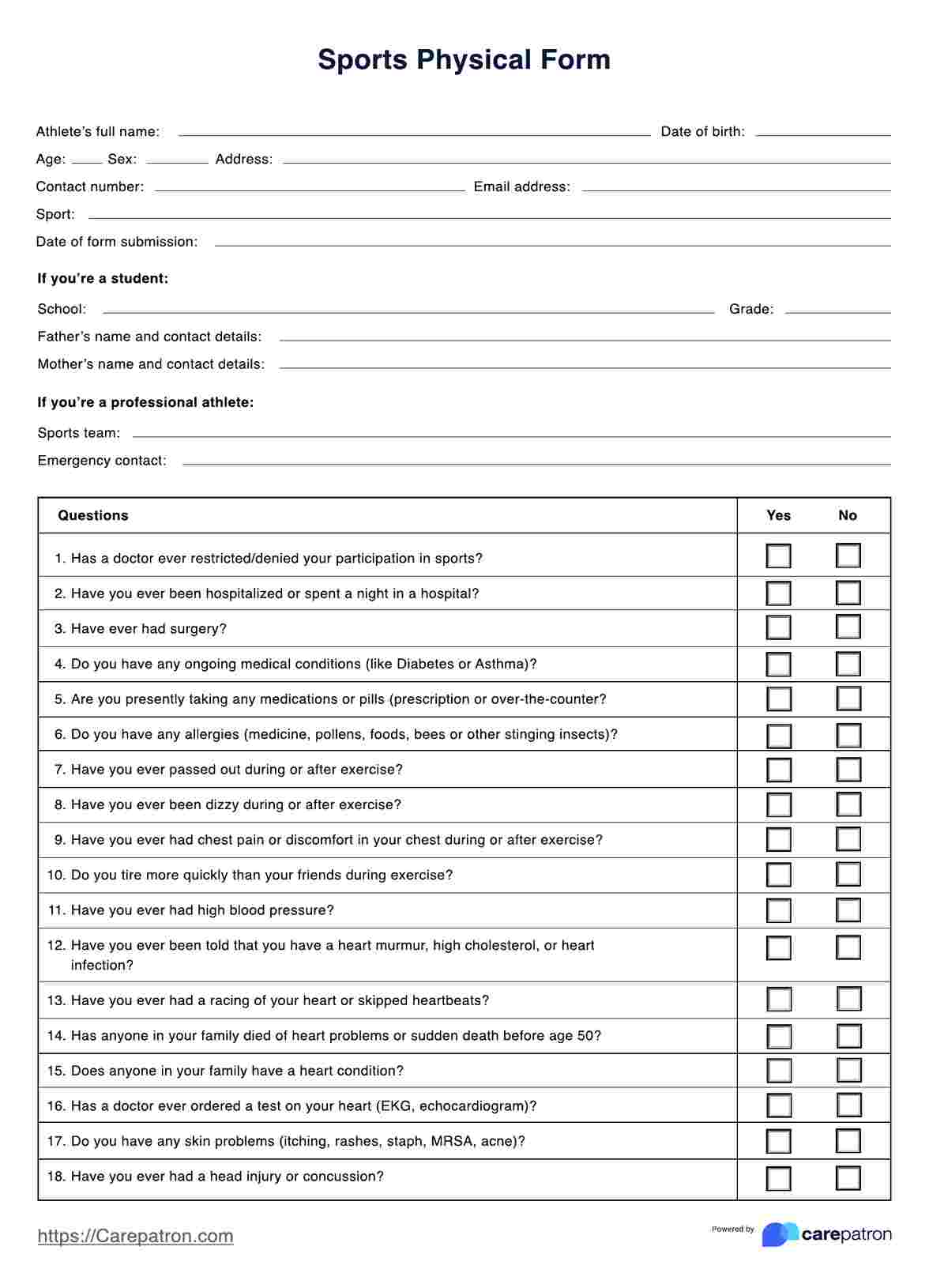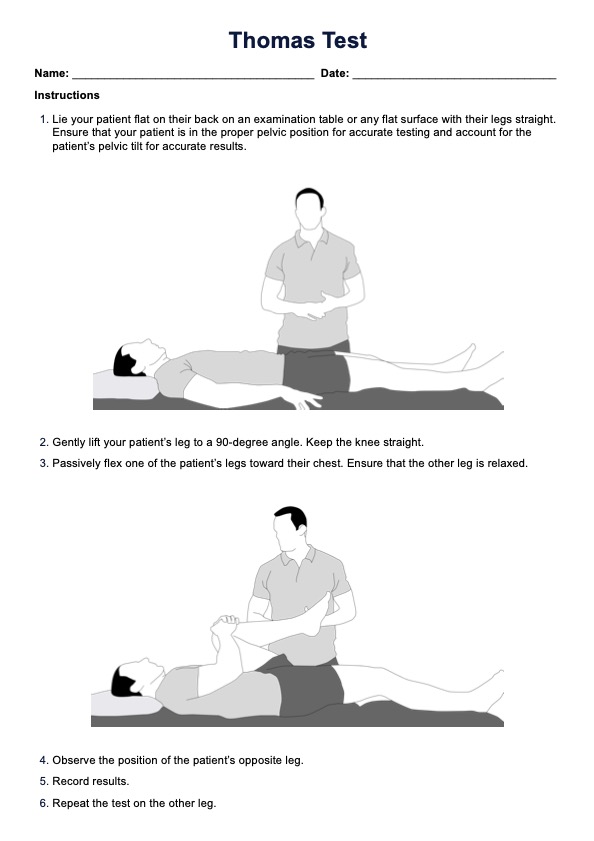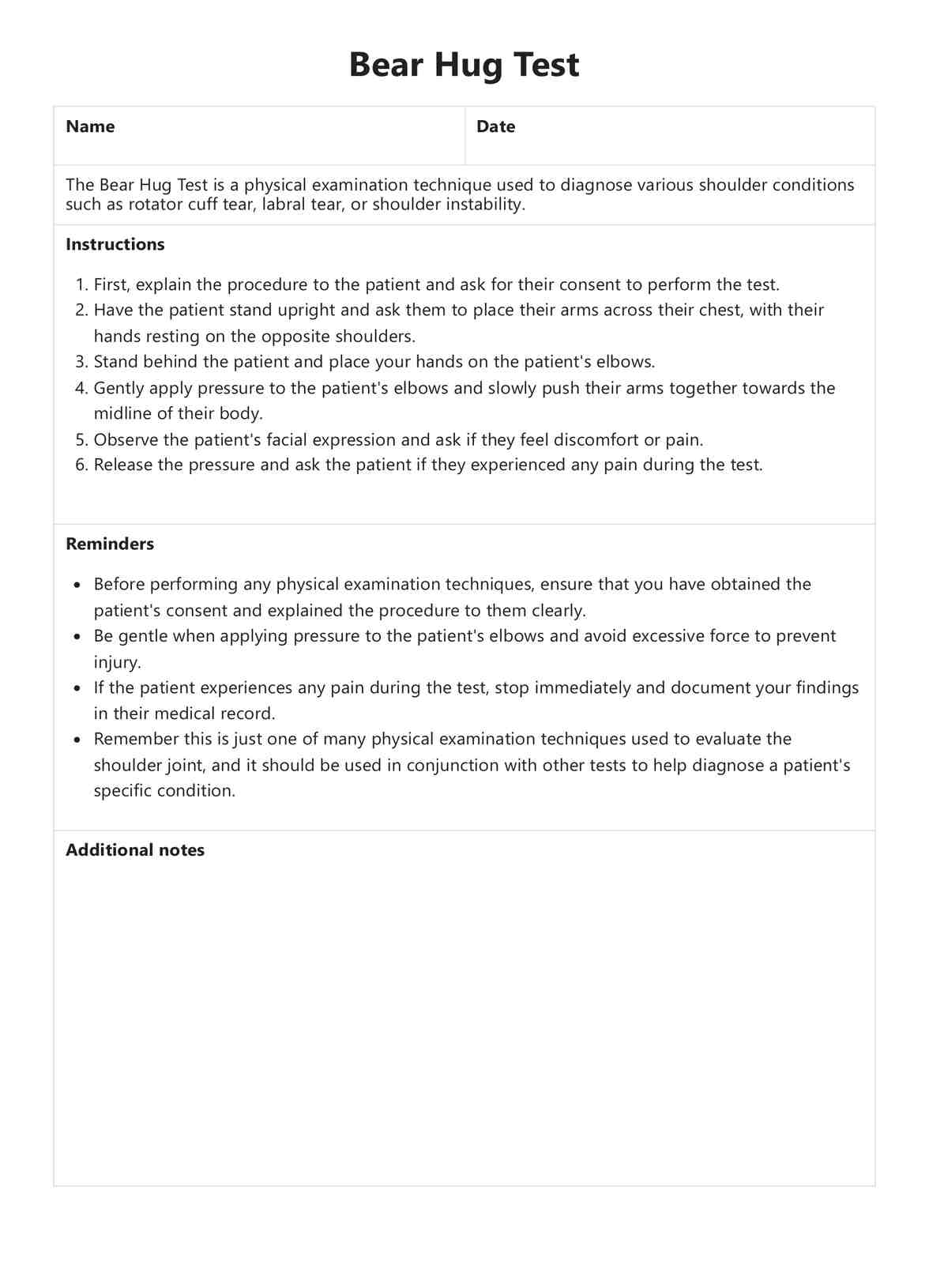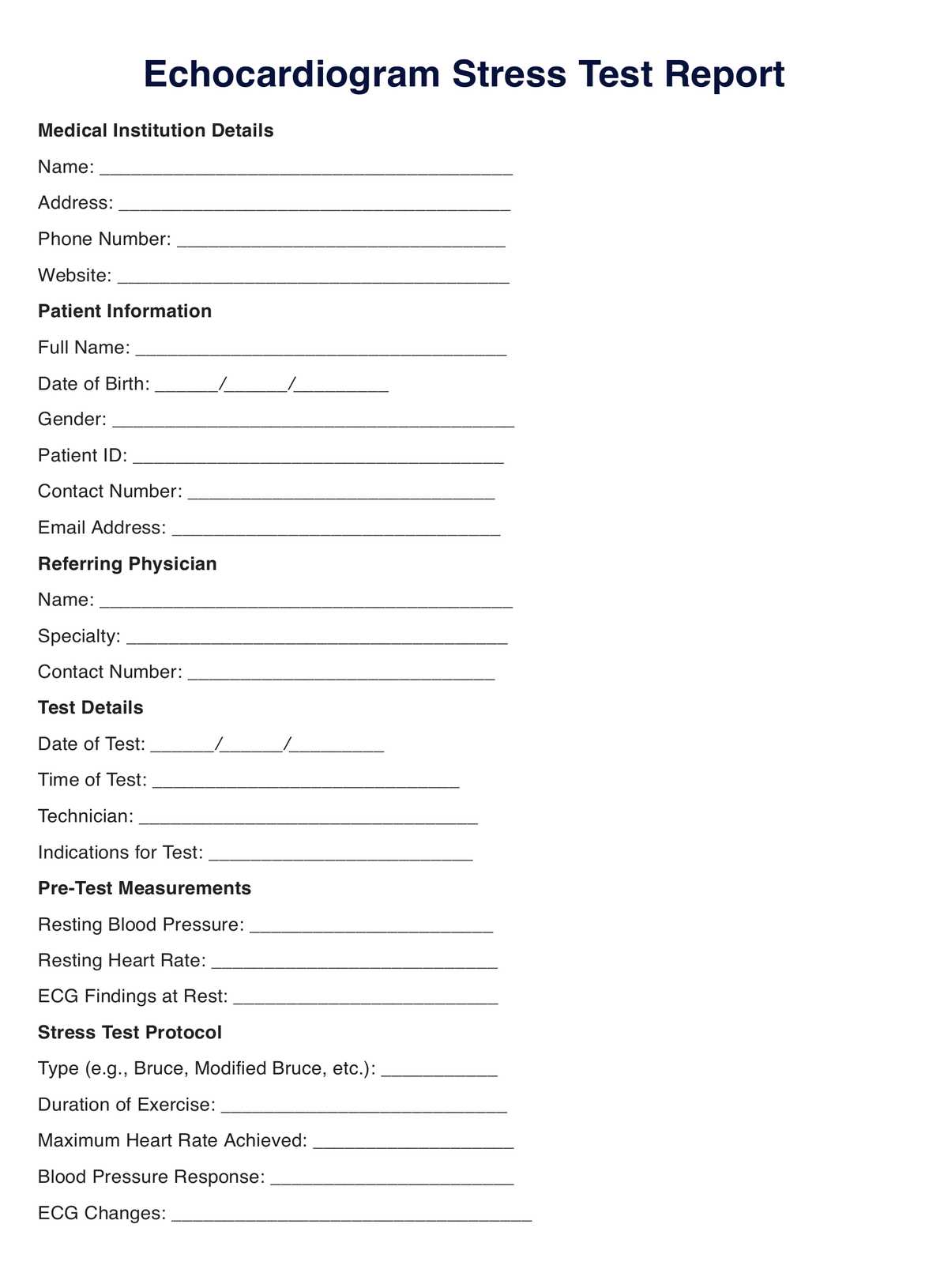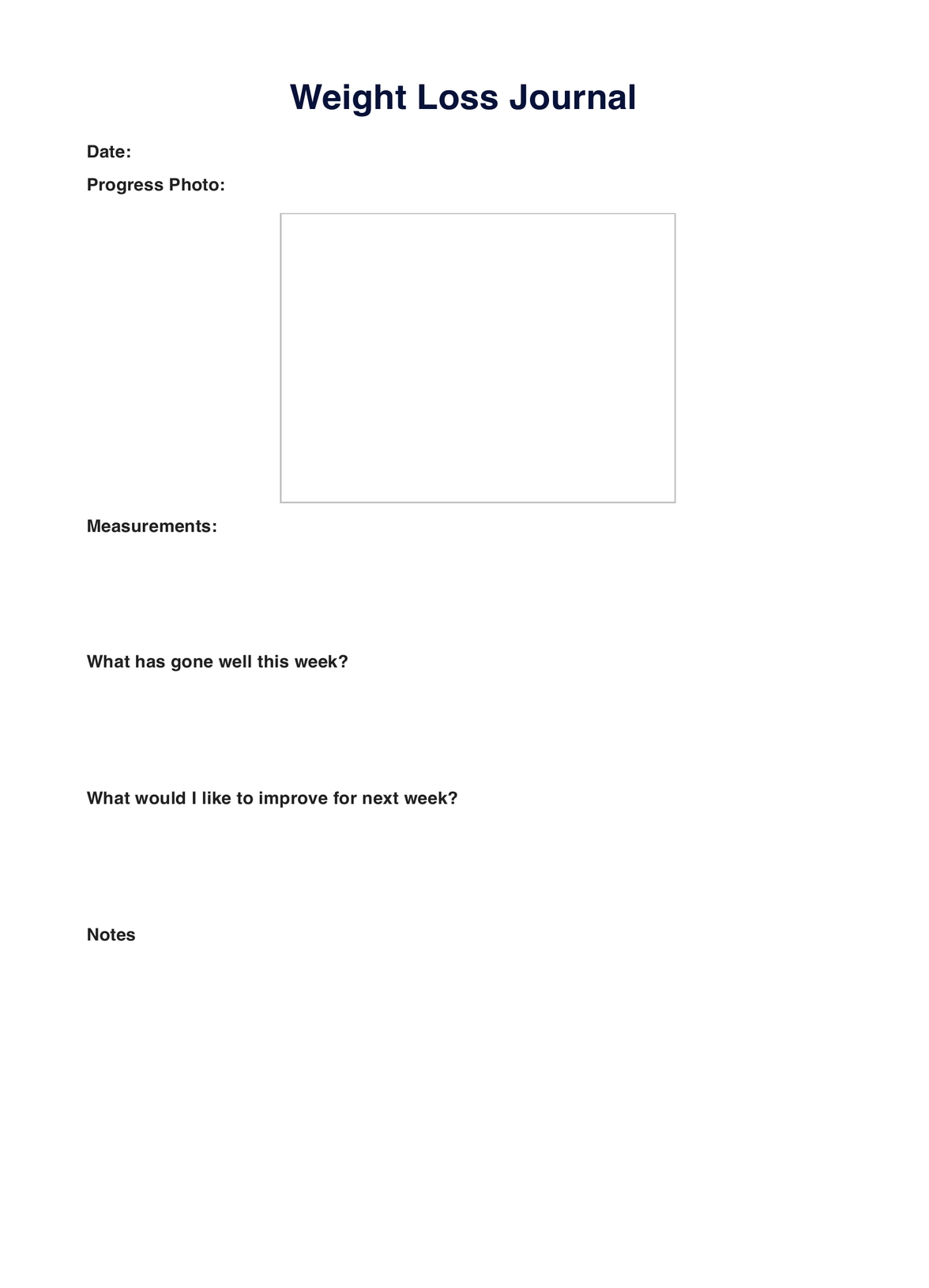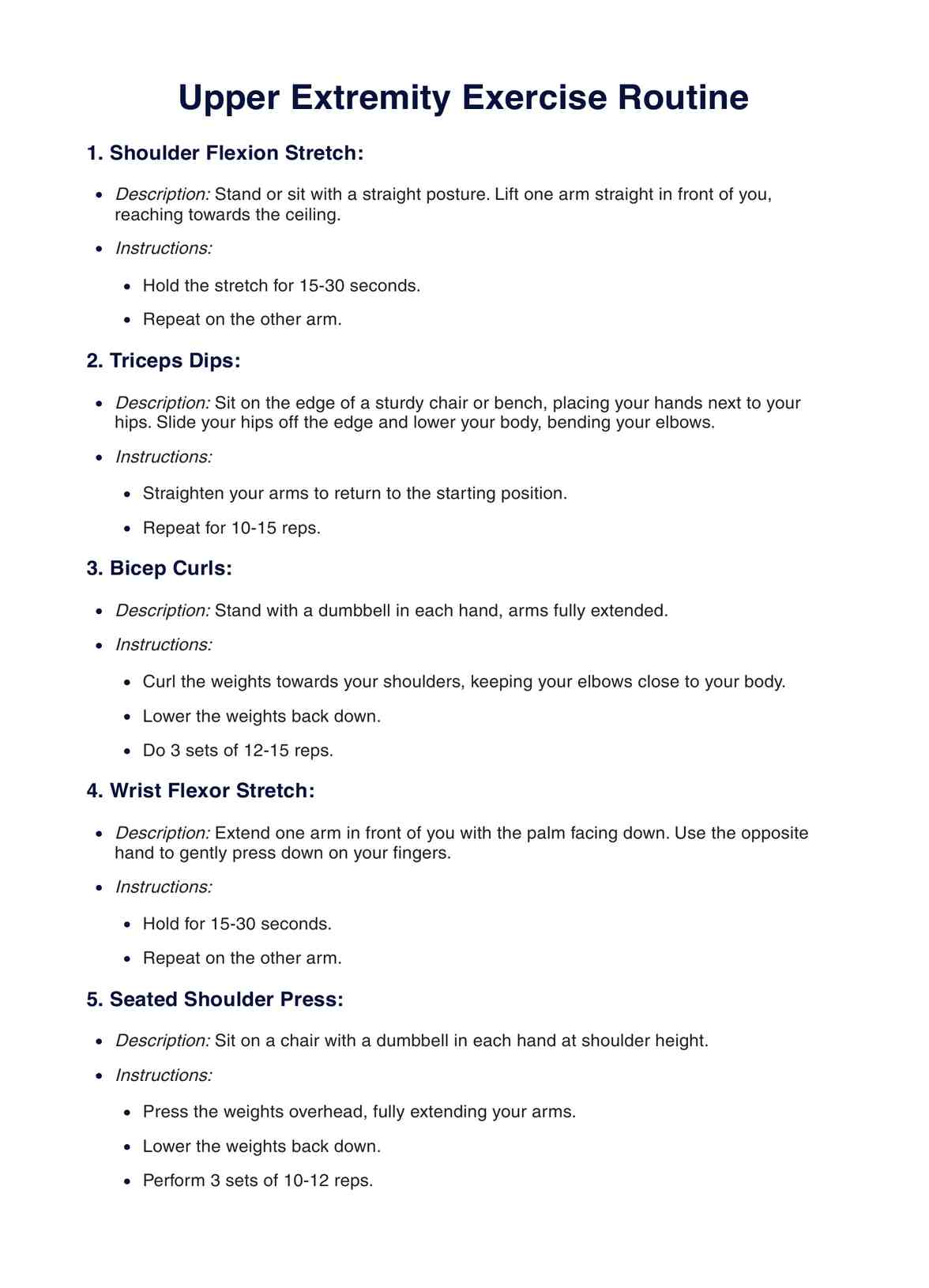Dynamic Gait Index
Use the Dynamic Gait Index (DGI) to determine the likelihood of falling in older adults. Check out our guide on how to use it and download our free template.


What is a Dynamic Gait Index (DGI)?
The Dynamic Gait Index, also known as DGI for short, is an assessment developed to evaluate and document the likelihood of falling in older adults. It is used to assess gait, walking function, and dynamic balance (Shumway-Cook & Woollacott, 1995). It tests the eight types of gait, namely:
- Gait level surface
- Change in gait speed
- Gait with horizontal head turns
- Gait with vertical head turns
- Gait and pivot turn
- Step over obstacles
- Steps around obstacles
- Steps (stair climbing)
These tasks are everyday movements a client may encounter, from walking with and without obstacles to abrupt turning/stopping and even various head movements.
The test utilizes equipment such as shoeboxes, stairs, a stopwatch, and a marked walkway, and each test shouldn't take longer than 30 minutes.
By the end of the test, the rater must be able to identify the fall risk and possible challenges a client may face outside the test set-up.
This tool is essential for general practitioners, neurologists, physical and occupational therapists, and rehabilitation nurses. It can assess patients who suffered a brain injury or stroke, those with vestibular disorders, or those with Parkinson's disease or multiple sclerosis. It can also be used alongside the likes of the Functional Gait Assessment.
Dynamic Gait Index Template
Dynamic Gait Index Example
How does this Dynamic Gait Index work?
To incorporate this test into your practice, follow these steps:
Step 1: Download the template
You can access the template by clicking “Download” or searching for “Dynamic Gait Index” in Carepatron's template library. You can also print it in advance to have it readily available during the assessment.
Step 2: Prepare the template and equipment
Fill out the essential details on top of the form. Afterward, prepare the following equipment you need for carrying out the test:
- Shoebox
- Two cones
- Stairs
- 20-foot pathway, which is 15 inches wide
You should familiarize yourself with the instructions, scoring, and descriptions.
Step 3: Conduct the test
Instruct your client to perform the movements written on the template from top to bottom, taking short breaks in between if necessary. The test should take 20 minutes to complete.
Feel free to be on guard and half a step behind your client, just in case they need physical assistance. This will allow you to catch them if they lose their balance.
Step 4: Compute and interpret the score
After every test, check off the score corresponding to the level of function based on the description provided on the template. When you've finished with the eight facets, compute the total score by adding the scores obtained from the tests.
We've provided a space in our template where you can write comments or observations. For example, if the patient's Dynamic Gait Index (DGI) score is 14, you can write that they are at fall risk. That section also allows you to indicate any observations (e.g., the patient can smoothly change walking speed, demonstrates mild gait deviations, has shown a significant difference in results compared to the last test, has severe gait deviations, etc.).
Step 5: Formulate a clinical impression or diagnosis
Once you've finished scoring and writing down your assessment, you may proceed to formulate a clinical impression or diagnosis. However, clients should undergo further testing since certain disorders (like vestibular disorders) need complementary tests before diagnosis.
Scoring and interpretation
Scoring a Dynamic Gait Index (DGI) is as simple as observing your client during the test and giving them the corresponding score based on how fast or accurately they perform the movement with or without assistance.
The test uses an ordinal scale from 0-3, with 3 being the highest and 0 being the lowest. The corresponding level of function per score is as follows:
- Zero (0) = severe impairment
- One (1) = moderate impairment
- Two (2) = mild impairment
- Three (3) = normal
Generally, you can score a client a three (3) if they can fully follow instructions to the dot without delay or assistance and a zero (0) if they cannot follow instructions or refuse due to pain. Giving a one (1) or two (2) score will depend heavily on your observational skills. You may refer to the template for detailed descriptions. Scoring relies on the rater's comprehension of the provided criteria and their observational skills. In some situations, a second slower or a tilt towards a particular side can be the basis of a higher or lower score.
The total possible score is 24, and a score of ≤19 is predictive of falls in the elderly.
When to use this dynamic gait assessment?
Practitioners can use this dynamic gait assessment when the client manifests disorder symptoms that affect their gait or balance and interfere with everyday activities. However, even before manifestation, a practitioner may conduct the assessment when the client verbalizes concerns and problems doing any of the movements in the test in a real-life setting.
Aside from those, one must only use the template and conduct the test with the following considerations:
- Environment: To reduce distractions, the practitioner must consider administering the test in a standardized testing environment such as a doctor's office, hospital, or an outpatient/rehab clinic.
- Medical history: A practitioner may consider asking or reviewing the medical history in case the template is to be used as a baseline, a progress tracker, or a point of comparison. Moreover, if the client is diagnosed with other conditioners, more appropriate tests may be needed to check their gait instead.
- Client's age: The test may be designed for older adults but can be administered to anyone of any age. Considering your client's age will make it easier for you to filter out conditioners and disorders a client may have.
Benefits of free Dynamic Gait Index
Now that we've covered the essentials of DGI, let's see how this template can benefit you.
It helps establish a baseline.
Practitioners with new clients who haven't been diagnosed or aren't in the middle of a treatment plan or program can use the template to establish a baseline for comparison post-test and post-intervention.
It provides insight.
If the client is in the middle of treatment or a program, practitioners can also use this template to check whether the intervention is helping to reduce the client's risk of falling.
It improves the self-awareness of the patient.
Clients who haven't done the test before can learn more about themselves through this test and identify their physical limits and capabilities.
It facilitates quick screening.
Since this test can be accomplished in 15-30 minutes, it's ideal for a practitioner to conduct it during a consenting client's first session. That way, the practitioner may proceed with the next steps to handling their concerns or alleviating their pain as soon as possible.
It helps create individualized treatment plans.
Clients are expected to have varying results on a standardized test. Hence, it is best to create a unique treatment plan to address specific problem areas. This test can be a reliable resource when designing a program or deciding on a treatment plan since it pinpoints which movements need intervention.
Reference
Shumway-Cook, A., & Woollacott, M. (1995). Motor control theory and practical applications (pp. 322–324). Williams & Wilkins.
Commonly asked questions
It is attributed to Anne Shumway-Cook and Marjorie Woollacott and is included in their 1995 book Motor Control Theory and Practical Applications.
On the Dynamic Gait Index template, you will see a corresponding function level per score. The level of function will tell you how capable or incapable the client is of achieving specific movements without assistance.
The interpretation of the total score is as simple as this: if the client obtains a score of 19 or less, they are at high risk of falling, and if they get a score greater than 22, it means they are ambulatory without risks.
The Dynamic Gait Index assesses the risk of falling in older adults through 8 types of gait tests involving tasks that require the client to do everyday movements such as walking, stopping, turning, etc. It also can measure a client’s stability and body control for movement.


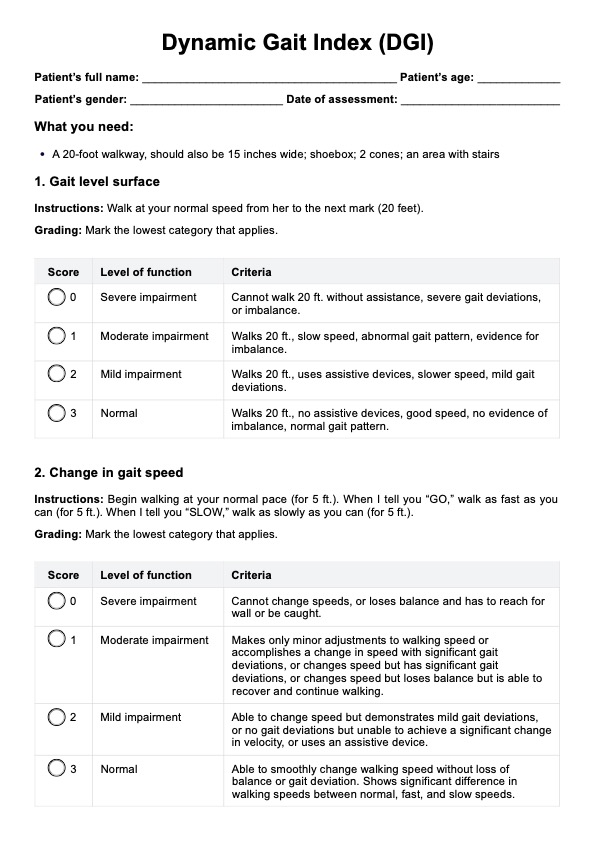
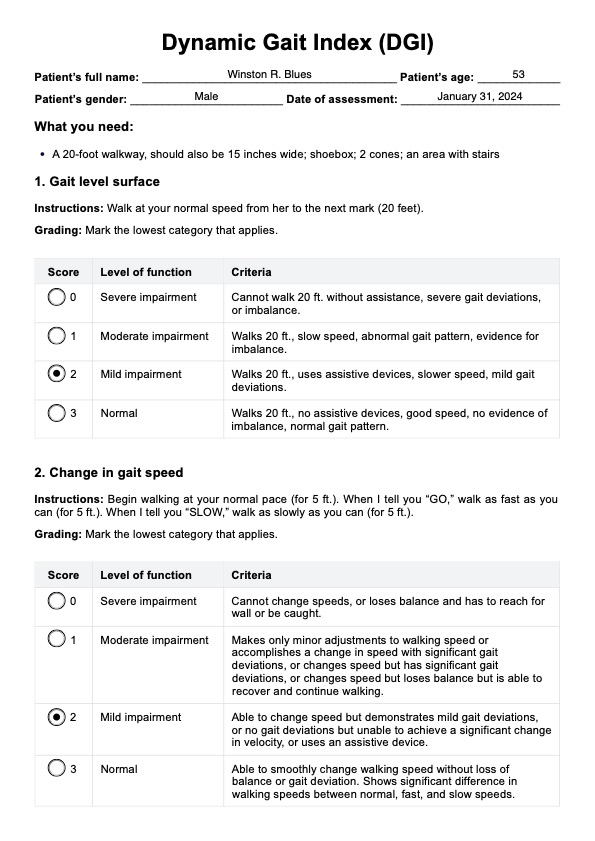
















-template.jpg)



















































































